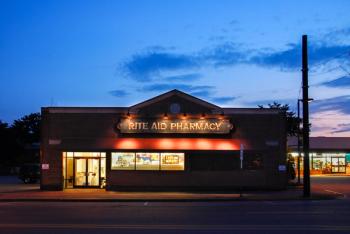
Patients with Ankylosing Spondylitis and Psoriatic Arthritis May Have Higher Cardiovascular Risk
A study suggests that patients with ankylosing spondylitis and psoriatic arthritis have more cardiac risk factors than age- and gender-matched controls.
A study suggests that patients with ankylosing spondylitis and psoriatic arthritis have more cardiac risk factors than age- and gender-matched controls.
The results of a recent study found higher smoking prevalence and a higher atherogenic index in participants with ankylosing spondylitis or psoriatic arthritis than in age- and gender-matched control patients.
The study, published in the January 2014 edition Joint Bone Spine, points to higher cardiovascular risk for participants with the conditions, the researchers determined. The study included participants with various forms of spondyloarthritis, with ankylosing spondylitis and psoriatic arthritis being the largest cohorts.
“Our group of [spondyloarthritis] patients, particularly those with [ankylosing spondylitis] and [psoriatic arthritis], seem to be exposed to a higher than expected cardiovascular risk,” the researchers wrote. “This is due to a greater prevalence of smoking and a type of atherogenic profile, which is principally characterized by a higher atherogenic index.”
Researchers recruited 150 participants with spondyloarthritis, and 150 age- and gender-matched control participants from an outpatient rheumatology clinic at the University Hospital of Ioannina in Greece. Among the spondyloarthritis participants, 73 had ankylosing spondylitis, 71 had psoriatic arthritis, 3 had nonradiographic axial spondyloarthritis, 2 had undifferentiated spondyloarthritis, and a single participant had axial spondyloarthritis that began as juvenile idiopathic arthritis.
Participants were receiving tumor necrosis factor alpha blockers, disease-modifying antirheumatic drugs, or low-dose glucocorticosteroids as treatment. Participants tended to have long-standing disease but low to moderate disease activity. At the study outset, 39 participants had arterial hypertension, 3 had ischemic heart disease, 1 had peripheral arterial disease, and 21 participants—12 with ankylosing spondylitis and 9 with psoriatic arthritis—were taking statins for dyslipidemia.
Compared with their control counterparts, participants in the ankylosing spondylitis group where more likely to be smokers, the researchers noted. Despite this, participants had lower average body mass indexes than their control counterparts, and lower triglyceride and high-density lipoprotein (HDL) levels. Participants in this group also had an increased total cholesterol (TC) to HDL cholesterol ratio; lower levels of ApoB, ApoE, and Lp(a); and a lower ApoB to Apo AI ratio.
“A lower HDL level and a higher TC/HDL ratio were also observed separately in both the [ankylosing spondylitis] and the [psoriatic arthritis] subgroup,” the researchers wrote. “Besides, in multivariate regression analysis, the atherogenic index was the single lipid parameter that was repeatedly and positively associated with the presence of disease, irrespectively of smoking and other lipid variations.”
Meanwhile, participants in the psoriatic arthritis group were as likely to smoke as their control counterparts, and their body mass indexes, although in the overweight range, matched that of the control group. Psoriatic arthritis participants, however, had higher waist-to-hip ratios than the control group. Participants with psoriatic arthritis had lower HDL, ApoAI, and ApoE levels, and their TC to HDL cholesterol ratio and serum urate levels were higher than the control group, researchers noted.
“Psoriatic arthritis patients were as overweight as controls and also had more abdominal fat than control subjects, as evidenced by the higher average [waist-to-hip] ratio,” the researchers wrote. “Interestingly, in psoriatic arthritis, both [body mass index] and [waist-to-hip] ratio correlated positively with laboratory inflammatory markers.”
Researchers also assessed the impact of treatment on cardiovascular risk factors, by including 41 participants with previously untreated disease in the study. The cohort included 24 participants with psoriatic arthritis and 14 participants with ankylosing spondylitis. These participants had active disease; tended to be smokers; had lower levels of TC, HDL, ApoAI, and ApoE; and had a higher ApoB/ApoAI ratio than a comparable control group. Treatment regimens included anti—tumor necrosis factor alpha monotherapy (16 participants), methotrexate monotherapy (1 participant), cyclosporine monotherapy (1 participant), or combination therapy that included tumor necrosis factor alpha inhibitor plus methotrexate (8 participants), tumor necrosis factor alpha inhibitor plus leflunomide (1 participant), or tumor necrosis factor alpha inhibitor plus cyclosporine plus leflunomide (1 participant).
After 6 months of treatment, participants showed a significant decline in inflammatory markers, a slight but significant decline in ApoB levels, and borderline significant improvements for ApoAI and the ApoB/ApoAI ratio. By 12 months, disease measures improved, but there was no significant change in obesity measures or lipid profile.
Newsletter
Stay informed on drug updates, treatment guidelines, and pharmacy practice trends—subscribe to Pharmacy Times for weekly clinical insights.




















































































































































































































